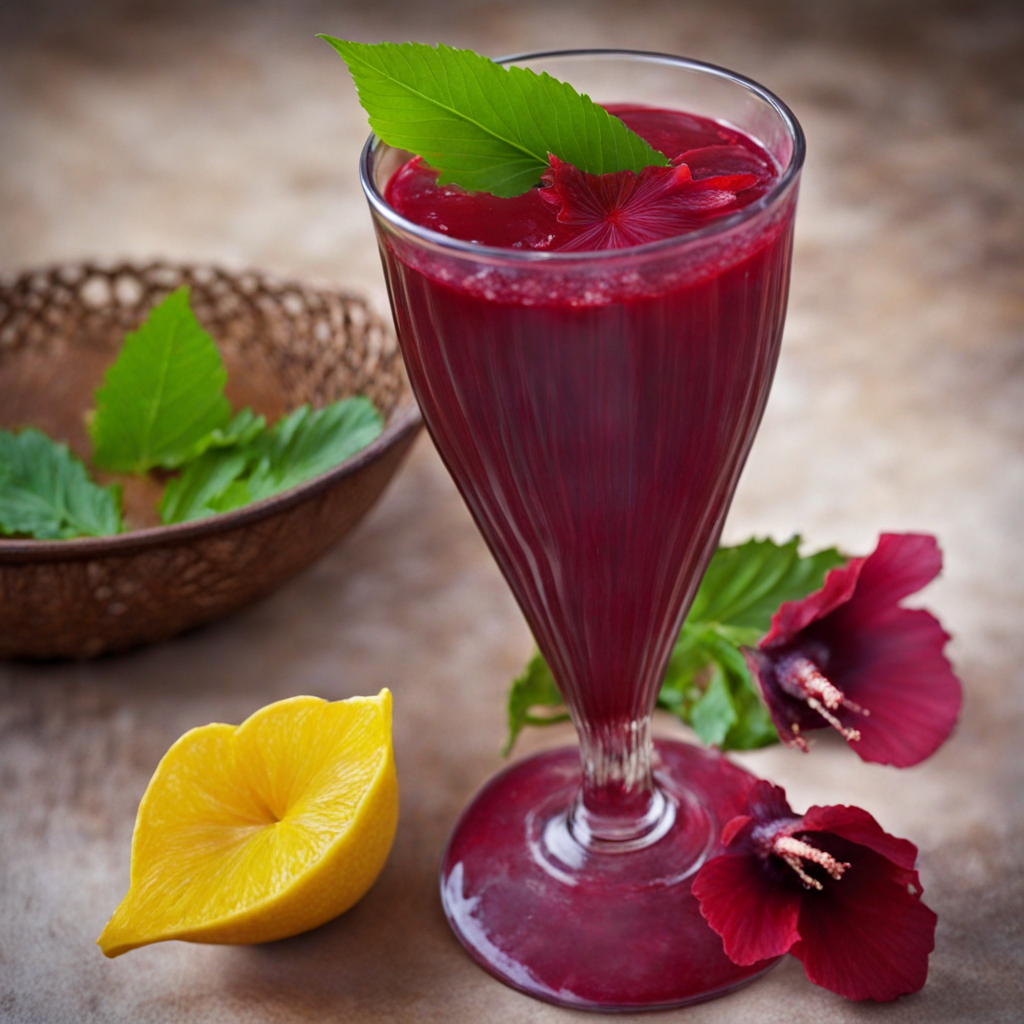Accara
Accara, a beloved street food from Mali, is a delightful deep-fried snack made primarily from black-eyed peas. The beans are soaked, peeled, and then ground into a smooth paste, often mixed with ingredients like onions, garlic, and spices to enhance their flavor. This mixture is then shaped into small balls or patties and fried until they achieve a golden brown hue, resulting in a crispy exterior that beautifully contrasts with the soft, fluffy interior. The aroma of frying Accara fills the air, enticing anyone nearby to indulge in this savory treat. The taste of Accara is a harmonious blend of nuttiness from the black-eyed peas and a touch of warmth from the spices, usually pepper and sometimes a hint of ginger or chili. Each bite offers a satisfying crunch followed by a tender, flavorful center, making it an addictive snack that can be enjoyed at any time of the day. Accara is often served with a spicy dipping sauce, adding an extra kick that elevates the overall experience. This combination of textures and flavors creates a unique sensory experience that is both comforting and invigorating. In Mali, Accara is more than just food; it is a social experience. Vendors often sell these tasty bites from street stalls, where locals gather to enjoy them fresh out of the fryer. The dish is commonly eaten as a snack or appetizer, perfect for sharing with friends and family. Its popularity has spread beyond Mali, inspiring variations in different West African countries, yet the essence of Accara remains rooted in its traditional preparation and communal enjoyment, making it a must-try for anyone eager to explore new culinary landscapes.
How It Became This Dish
Accara: A Culinary Journey through Mali's Rich Heritage Accara, a beloved dish from Mali, is more than just food; it is a cultural emblem that embodies the history, traditions, and flavors of West Africa. Typically made from black-eyed peas, these delightful fritters are seasoned with spices, formed into balls, and deep-fried until golden brown. The dish is cherished not only for its taste but also for its deep-rooted cultural significance and its evolution over centuries. Origins of Accara The origins of Accara can be traced back to the ancient agricultural practices of the West African region, where black-eyed peas were cultivated as a staple crop. This legume, believed to have originated in West Africa, has played a vital role in the diets of many communities throughout the region. The cultivation of black-eyed peas dates back thousands of years, linking the people of Mali to their agrarian past. The name "Accara" itself is thought to have derived from the Yoruba word "akara," which refers to a similar dish made from black-eyed peas. This connection highlights the shared culinary traditions that transcend regional boundaries in West Africa. As trade routes flourished across the region, culinary practices, ingredients, and dishes began to intermingle, paving the way for the evolution of Accara into the form we recognize today. Cultural Significance In Mali, Accara is much more than a snack or side dish; it is a symbol of community, hospitality, and celebration. It is commonly served at various social gatherings, from family celebrations and weddings to communal feasts during religious festivals. The preparation and sharing of Accara often bring people together, fostering a sense of unity and belonging. The dish is particularly popular during Ramadan, when Muslims break their fast. The crispy texture and savory flavor of Accara make it a delectable choice for iftar, the meal consumed after sunset. In these moments, the act of sharing food transcends mere sustenance; it becomes an expression of love, care, and togetherness. Accara also carries significant symbolism in Malian culture. The act of cooking and serving it is often accompanied by traditional songs and dances, celebrating the joy of food and fellowship. Women, who traditionally play a central role in food preparation, often gather to make batches of Accara, sharing stories and wisdom through generations. This communal aspect of cooking reinforces the importance of passing down culinary traditions, ensuring that the art of making Accara remains alive. Development Over Time As Mali has evolved through historical changes, so too has the dish of Accara. The influence of colonialism, migration, and globalization has left an indelible mark on Malian cuisine, including the preparation and perception of Accara. Throughout the colonial period, various European powers exerted influence over West Africa, introducing new ingredients and cooking techniques. While Accara remained rooted in its traditional preparation, the incorporation of other spices and flavors became commonplace. For instance, the addition of chili peppers, onions, and herbs like parsley and coriander has become popular, giving the dish a unique twist while preserving its essence. In contemporary Mali, Accara continues to be a staple in both urban and rural areas. Street vendors often sell the fritters, allowing locals and tourists alike to indulge in this quintessential snack. The rise of globalization has also led to the dish gaining attention beyond Mali’s borders, as West African communities around the world seek to preserve their culinary heritage. In cities with significant African diaspora populations, such as Paris and New York, Accara is often featured in restaurants and food markets, celebrated for its authentic taste and cultural significance. The modern culinary landscape has also seen chefs reimagining traditional dishes like Accara, experimenting with different ingredients and cooking methods. While some chefs stay true to the original recipe, others may incorporate elements from fusion cuisine, such as using quinoa or sweet potatoes as substitutes for black-eyed peas. These adaptations reflect the ongoing dialogue between tradition and innovation in the culinary world. Accara in the Contemporary Culinary Scene Today, Accara stands as a testament to the resilience and adaptability of Malian cuisine. The dish continues to be celebrated not only for its flavor but also for its role in cultural preservation. In an age where globalization threatens to homogenize culinary practices, dishes like Accara remind us of the importance of maintaining cultural identity through food. The popularity of Accara has also inspired culinary enthusiasts and food historians to explore the broader context of West African cuisine. Food festivals, cooking classes, and cultural events centered around Malian dishes often highlight the communal aspects of food preparation and consumption. These events serve as platforms for sharing stories, traditions, and recipes, ensuring that the legacy of Accara and other traditional dishes is passed on to future generations. Furthermore, the rise of social media has allowed for a renewed interest in traditional dishes like Accara. Food bloggers and influencers showcase their culinary creations, often sharing stories about the cultural significance of the dishes they prepare. This trend has sparked a global appreciation for West African cuisine, elevating dishes like Accara to a wider audience. Conclusion Accara is more than a simple fritter; it is a vibrant expression of Malian culture, history, and community. Its journey from ancient agricultural practice to contemporary culinary phenomenon reflects the resilience and adaptability of a people deeply connected to their roots. As Accara continues to evolve, it remains a symbol of celebration, hospitality, and togetherness, bridging generations and cultures through the universal language of food. In every bite of Accara, one can taste the richness of Malian heritage, the warmth of shared meals, and the spirit of community that defines this beloved dish. As we savor Accara, we not only indulge in its deliciousness but also honor the traditions and stories that have shaped it over time, ensuring that this culinary treasure remains a cherished part of Mali's identity for years to come.
You may like
Discover local flavors from Mali







